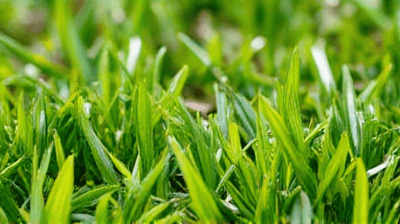Caring for your lawn can be a rewarding endeavor, providing not only a beautiful outdoor space but also a healthy environment for your family and wildlife. Many homeowners, however, turn to chemical fertilizers, pesticides, and herbicides to maintain their lawns, often unaware of the potential harm these substances can cause to the ecosystem, their health, and their pets. Fortunately, there are numerous effective and natural methods for nurturing your lawn without the use of chemicals.

Understanding the Importance of Chemical-Free Lawn Care
Health Considerations
Chemical fertilizers and pesticides can pose risks not only to the environment but also to human health. Exposure to these substances can lead to a myriad of health problems, including respiratory issues, skin irritations, and long-term effects associated with chronic exposure. By opting for chemical-free methods, you protect your family, pets, and the surrounding wildlife.
Environmental Impact
Synthetic chemicals can leach into the soil and waterways, contributing to pollution and harming aquatic ecosystems. Chemical runoff often leads to algal blooms in lakes and rivers, depleting oxygen levels and causing harm to fish and other aquatic life. Caring for your lawn organically helps minimize this environmental impact.
Sustainability
Embracing natural lawn care is part of a broader commitment to sustainability. Organic practices foster soil health and biodiversity, creating a resilient ecosystem that can better withstand the challenges of pests, diseases, and changing weather patterns.
The Fundamentals of Chemical-Free Lawn Care
Before diving into specific strategies and techniques for maintaining your lawn, let’s go over some fundamental principles of organic lawn care:
1. Healthy Soil
The foundation of a lush lawn begins with healthy soil. Soil rich in organic matter provides essential nutrients, improves water retention, and supports beneficial microorganisms. Testing your soil can help you understand its pH level and nutrient profile.
2. Appropriate Mowing Practices
Regular mowing helps maintain the health of your grass. However, improper mowing techniques can stress the grass and lead to weed infestations. Keep your mower blades sharp and set them to the appropriate height for your specific grass type.
3. Proper Watering Techniques
Consistent and adequate watering is crucial for lawn health. However, over-watering can lead to shallow root development and make your lawn more susceptible to diseases. It's best to water deeply and infrequently, allowing the soil to dry out between watering sessions.
4. Mulching and Composting
Returning organic matter to the soil through mulching and composting enriches it with nutrients. Grass clippings and leaves serve as a natural fertilizer, while compost improves soil structure and microbial activity.
5. Integrated Pest Management (IPM)
Integrated Pest Management involves monitoring for pests and diseases and using a combination of natural and cultural practices to manage them. By focusing on prevention and natural solutions, you can maintain a healthy lawn without resorting to chemicals.
Strategies for Caring for Your Lawn Without Chemicals
Now that we have established the core principles, let’s delve into specific strategies and techniques for maintaining a chemical-free lawn.
1. Soil Testing and Amendment
Before initiating any lawn care regimen, it’s essential to assess your soil.
Soil Testing
- Evaluate pH: Most grasses thrive in a pH range of 6.0 to 7.0. Soil testing kits or professional services can determine your soil’s pH.
- Nutrient Analysis: Soil tests will provide information on nutrient levels, indicating deficiencies of vital nutrients like nitrogen, phosphorus, and potassium.
Amending Soil
Based on the results of your soil test, you can make necessary amendments:
- Compost: Add organic compost to improve nutrient content and moisture retention.
- Organic Fertilizers: Use bone meal, blood meal, or fish emulsion to address specific nutrient deficiencies.
- Lime: If your soil is too acidic, applying lime can help raise the pH.
2. Choosing the Right Grass Type
Selecting a suitable grass type for your climate and soil conditions is vital for a healthy lawn.
Cool-Season Grasses
These grasses thrive in northern climates and grow best in temperatures between 60 and 75 degrees Fahrenheit. Common cool-season grasses include:
- Kentucky Bluegrass: Known for its lush appearance and fine texture, it performs well in various soil types.
- Perennial Ryegrass: Germinates quickly and establishes rapidly, making it ideal for quick repairs.
- Tall Fescue: Tolerates heat and drought, making it a versatile choice for transitional and northern zones.
Warm-Season Grasses
These grasses are better suited for southern climates, thriving at temperatures between 80 and 95 degrees Fahrenheit. Common warm-season grasses include:
- Bermudagrass: Popular for its durability, it grows well in sunny areas and withstands heavy foot traffic.
- Zoysiagrass: Known for its dense growth and heat tolerance, it forms a lush lawn but establishes slowly.
3. Mowing Practices
Proper mowing techniques can greatly impact the health and appearance of your lawn.
Mowing Height
Each grass type has an optimal mowing height:
- Cool-season grasses: Mow at 2.5 to 4 inches.
- Warm-season grasses: Mow at 1 to 3 inches.
Mowing at the proper height encourages deeper root growth and helps shade weeds, preventing them from germinating.
Mowing Frequency
Regular mowing promotes an even lawn but avoid cutting more than one-third of the grass height at once. This reduces stress and allows grass to recover quickly.
Grasscycling
Leave grass clippings on the lawn after mowing. This technique, known as grasscycling, returns nutrients to the soil and reduces the need for additional fertilizers.

4. Watering Techniques
Watering is crucial for lawn health, but it must be done correctly to avoid over-watering.
Deep and Infrequent Watering
- Water deeply: Aim for about 1 to 1.5 inches of water per week, including rainfall.
- Water infrequently: Allow the soil to dry out slightly between watering sessions to encourage deeper root growth.
Watering Time
Water early in the morning to minimize evaporation and reduce the risk of disease. Avoid watering in the evening, as this can leave the grass damp overnight.
5. Natural Fertilization
Instead of chemical fertilizers, consider using natural alternatives to nourish your lawn.
Organic Fertilizers
- Compost: Regularly top-dress your lawn with compost to add nutrients and improve soil structure.
- Seaweed Extract: Provides a range of micronutrients and promotes microbial activity in the soil.
- Blood and Bone Meal: High in nitrogen and phosphorus, these natural fertilizers help feed grass effectively.
Mulching
Use mulching mowers to return clippings to the lawn. This practice enriches the soil as the clippings decompose, providing valuable nutrients.
6. Natural Pest Control
If your lawn is afflicted by pests, there are numerous natural control methods available.
Beneficial Insects
Encouraging beneficial insects can help keep pest populations in check:
- Ladybugs: Predators of aphids and other soft-bodied insects.
- Lacewings: Feed on aphids, thrips, and caterpillars.
- Parasitic Wasps: Control pest populations by laying their eggs inside pest larvae.
Planting a variety of flowers can attract these beneficial insects to your lawn.
Homemade Pest Sprays
Create natural pest deterrents using household ingredients:
- Garlic Spray: Blend garlic cloves with water, strain, and spray on affected plants to repel pests.
- Soap Spray: Mix liquid soap with water and use it to control soft-bodied pests like aphids.
7. Weed Management
Weeds can compete with your lawn for nutrients and water. Implementing natural weed management strategies can help reduce their prevalence.
Preventive Measures
- Mow Properly: Maintain the grass at the appropriate height to shade weeds and minimize their growth.
- Mulch: Use organic mulch in garden beds to suppress weed growth.
Hand Pulling
For small infestations, simply hand-pulling weeds is an effective and non-chemical method. Remove weeds when they are young and before they can seed.
8. Aeration and Dethatching
Both aeration and dethatching are important for maintaining lawn health.
Aeration
Aeration involves perforating the soil with holes to relieve compaction, improve air exchange, and promote root growth. This process is especially beneficial for lawns experiencing heavy foot traffic.
- When to Aerate: The best time to aerate is during the growing season when the grass can recover quickly.
- How to Aerate: You can use a manual or power aerator. Aim for space between holes of about 2 to 4 inches.
Dethatching
Thatch is a layer of dead grass and organic matter that can build up and suffocate your lawn. Dethatching removes this layer, allowing more water and nutrients to reach the roots.
- When to Dethatch: Dethatch in the early spring or early fall when grass is actively growing.
- How to Dethatch: Use a dethatching rake or machine to remove excess thatch.
9. Seasonal Lawn Care Practices
Adjusting your lawn care practices seasonally can enhance its health throughout the year.
Spring Care
- Fertilize: Apply compost or a natural fertilizer as the grass begins to grow.
- Aerate and Overseed: Aerate and overseed the lawn to promote new growth and fill in bare patches.
Summer Care
- Water Wisely: Water deeply and infrequently to encourage deep root growth.
- Mow Regularly: Maintain the appropriate height and frequency for your grass type.
Fall Care
- Dethatch: Remove thatch buildup while the grass is actively growing.
- Final Fertilization: Apply compost or organic fertilizer to prepare the lawn for winter dormancy.
Winter Care
- Minimize Foot Traffic: Avoid walking on dormant grass to prevent damage.
- Clean Up Leaves: Regularly remove fallen leaves to prevent mold and pests.
Conclusion
Caring for your lawn without chemicals is not only possible but can also lead to a healthier, more sustainable outdoor space. By implementing the strategies outlined in this guide, you can nurture your lawn naturally while protecting the environment and your family's health. From soil testing and proper watering practices to natural fertilization and pest control, these methods will help create a thriving lawn that you can enjoy for years to come.
Transitioning to chemical-free lawn care requires patience and commitment, but the rewards of a vibrant, eco-friendly lawn are well worth the effort. Embrace the beauty of nature in your yard, foster a thriving ecosystem, and take pride in knowing that your lawn care practices contribute to a healthier planet.



